Hygiene and hiking
Hiker health
Personal hygiene is one of those practices we are all taught early in life; wash your hands, bathe on a regular basis, and always wear clean underwear. We are used to doing these things in our day to day life and the same rules apply in the bush that apply at home. However when we go bush we lose all the modern conveniences and with them the flexibility we have at home and have to adjust how we do things.
Most practices that relate to hygiene are based around common sense but why then do so many people ignore them when they hike? This article discusses the basics surrounding personal hygiene to ensure we have a trouble free adventure.
Hand washing
Our first consideration is hand washing. We wash our hands for a number of reasons:
- We’ve just been to the toilet, or are about to go and our hands are dirty
- We are about to prepare food or are changing between handling uncooked and cooked food
- We have been outside handling all sorts of natural materials and in many cases you don’t really know what you have been putting your hands on
The whole idea of hand washing is to clean our hands and remove germs that are there but aren’t obvious and we can either use two options when out hiking:
- You can either use a biodegradable soap, and/or
- Hand sanitiser.
The recommendations by the World health Organisation is to use soap and water if your hands are visibly dirty and wash thoroughly between 55-80 seconds. If your hands don’t appear dirty then use hand sanitiser and thoroughly rub it in for at least 20-30 seconds. A couple of years ago I heard the recommendation that you should sing happy birthday to yourself twice and that is about the length of time you should spend on hand washing.
Whether you use a biodegradable soap or hand sanitiser you shouldn’t wash your hands in creeks or rivers as someone else may be drinking downstream. Ideally you should be at least 60 metres away from a water source when washing any part of you to prevent artificial cleaners as well as your germs entering the water system.
If using sanitiser ensure you know where it is particularly at night otherwise you might just forget or decide you can’t be bothered.
Excessive hand washing can dry your hands out so if this is a problem then you may need to carry a small amount of moisturiser.
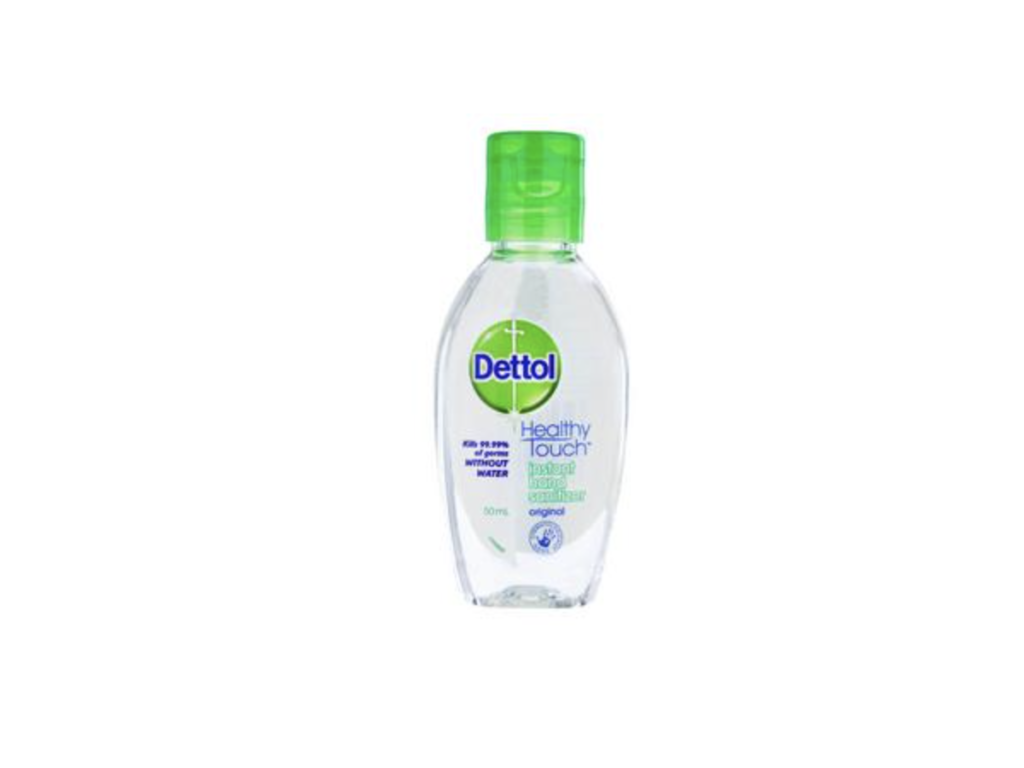
Hand sanitiser. These bottles are readily available, weight almost nothing and don’t take up much space
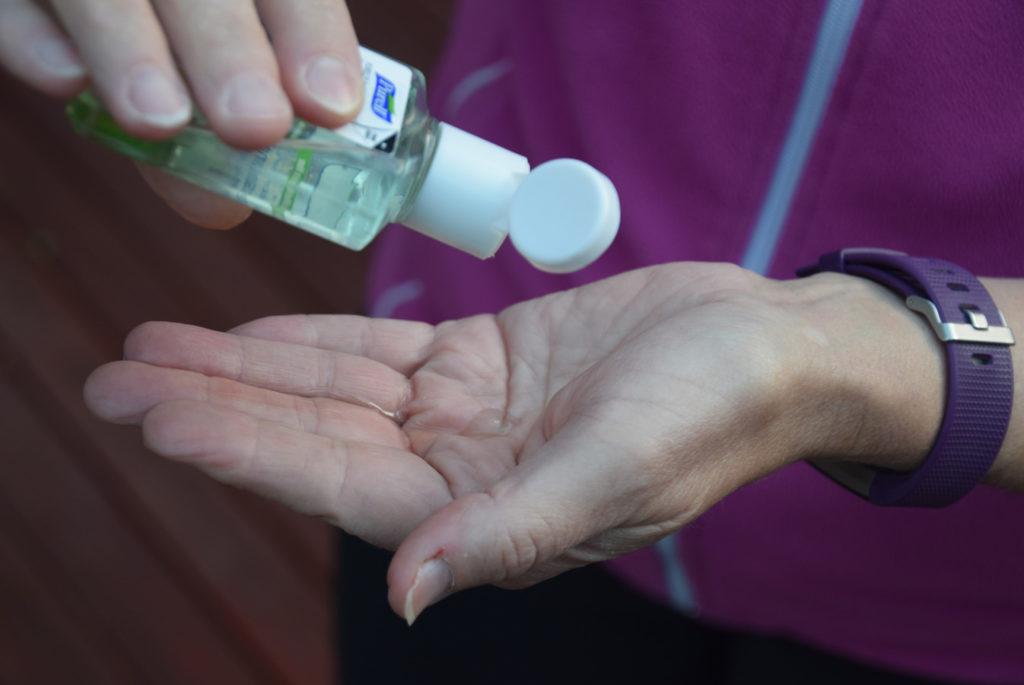
Hand washing. Keep the sanitiser close and remember to use it
Body washing
If you are hiking for any length of time get used to not being as clean as you usually would be. While you need to clean yourself all over from time to time areas such as hands, the face, armpits and groin are areas that will need more regular, daily cleaning.
If you’re doing an overnight hiking trail that has toilets at the trail head/campsites then it is easy to strip down and give yourself a good clean. If you have enough privacy, and you are really sure, then strip off outside the tent to give yourself a clean. Some people are very comfortable with themselves and don’t care who is looking but keep it family friendly.
At the recommendation of a hiking friend we now use a body washing system to help keep us clean on trail. This system involves using a disposable dishcloth (Chux), a small amount of water and a few drops of tea tree essential oil in a ziplock bag. Wipe your body focusing on the areas that need to be cleaned and don’t forget the bottom of your feet. You won’t get as clean as having a shower or bath but you will at least be reasonably clean, less offensive to other hikers, and you’ll feel ‘deceptively’ cleaner!
Again make sure you are at least 60 metres away from water sources to limit the amount of germs, bacteria and chemicals that enter the waterways.
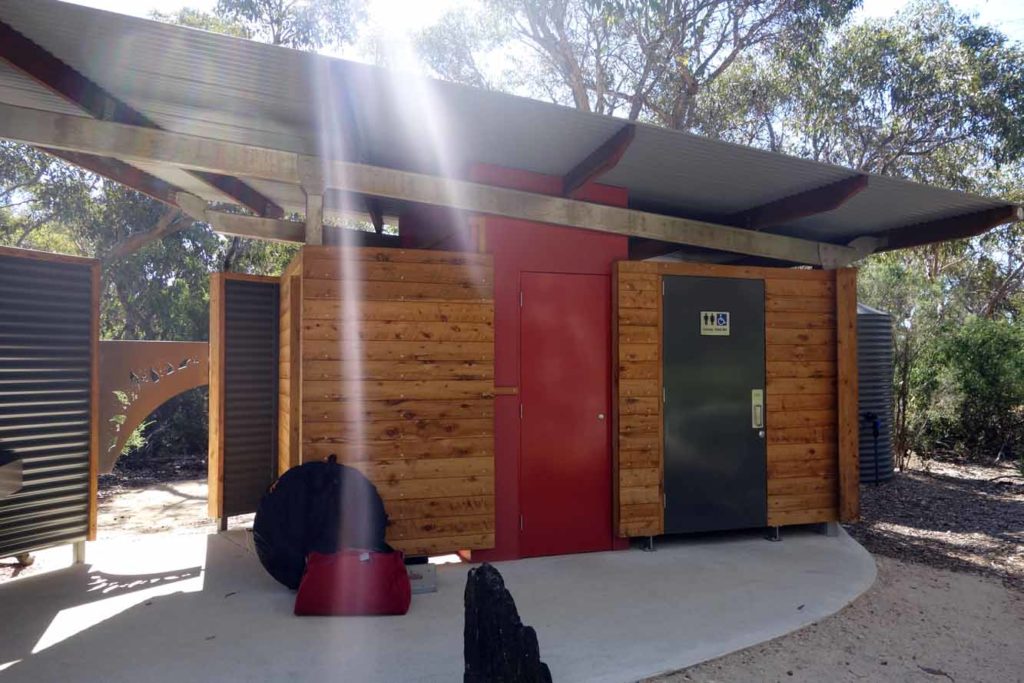
Toilet facilities typical of the campsites on the Kangaroo Island Wilderness Trail. These toilets are large enough to strip off and wash yourself. Alternatively if the weather is really bad you may have to bathe yourself in your tent.
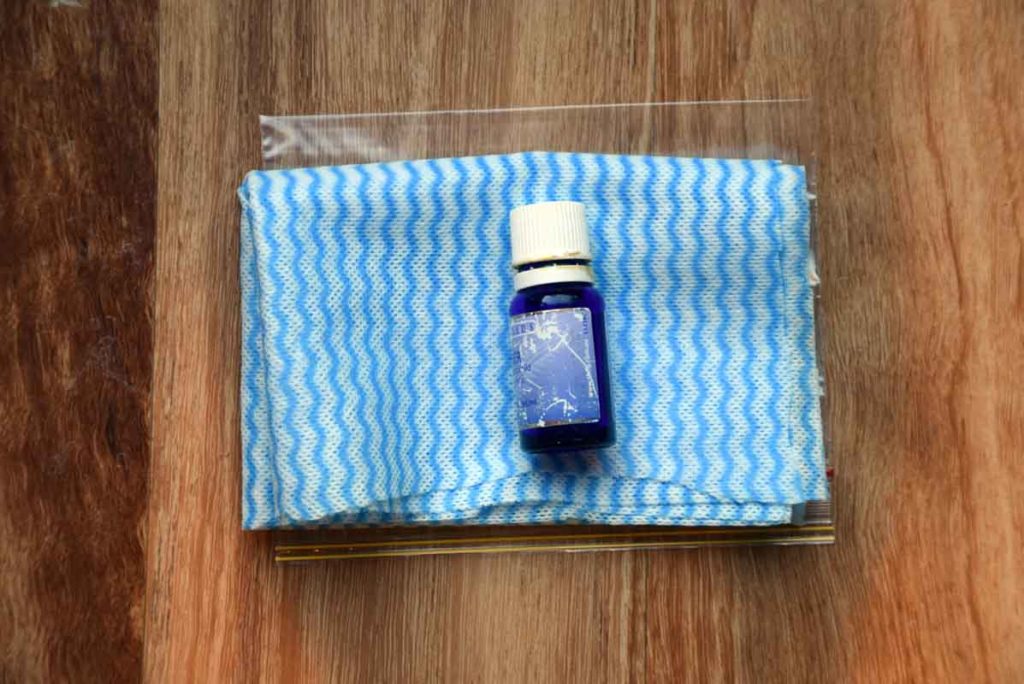
Body washing kit which includes a Chux cloth (disposable cleaning cloth) and essential oil. Just add a small amount of water to the ziplock bag water and a few drops of essential oil to take away the smell and start cleaning
Toileting
Whether you are doing a day hike or a multi week hike there is a possibility that you may need to poop on the trail. Regardless of the length of hike I will always carry a lightweight trowel and toilet paper just in case.
Ensure you do your business at least 60 metres away from water sources to minimise any human waste end up in the drinking water. Dig your cathole approximately 150 mm deep x 100-150 mm wide x 150-200 mm long. This size is bigger than you will often see recommended on most internet sites but as a couple this will last us until we leave camp the next morning, minimising the number of holes in the camp and making allowances for bad aim. To dig these holes either use a trowel or a sand peg. You will often see the heel of your boot recommended but this only works in soft soil and only if you are wearing boots.
Each time you use the hole put a thin layer of soil over the waste. Once you have finished and are about to leave camp backfill the hole and press down the soil. Don’t bury sanitary products as these don’t decompose so ‘pack them out’ and dispose of them when you get home.
Ensure you bring enough toilet paper to meet your needs. I work on a daily amount based on what I know I use on average and will pack the amount of sheets I need into a small ziplock bag.
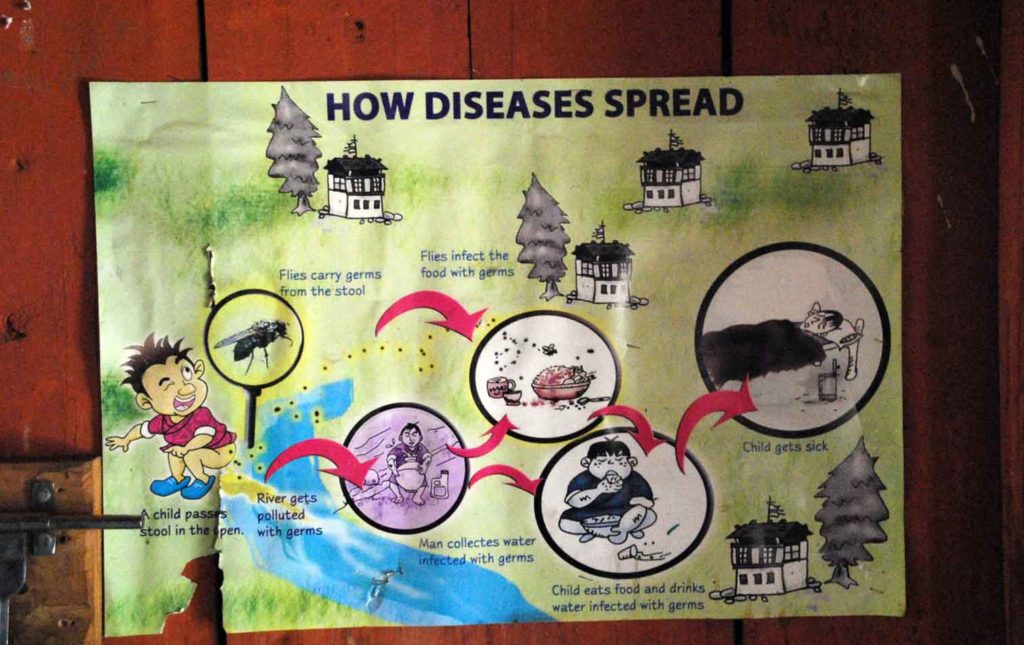
This poster was in one of the classrooms we visited in Bhutan and tells the kids about the disease cycle and how to prevent it including going to the toilet away from the waterways
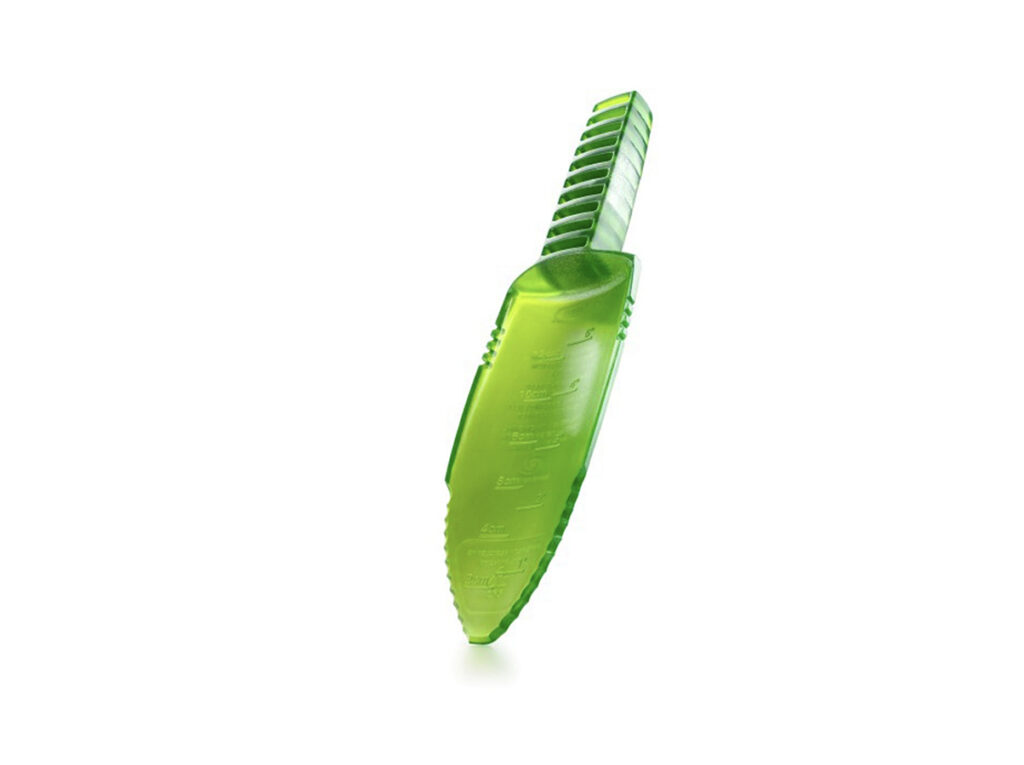
GSI Cathole Trowel
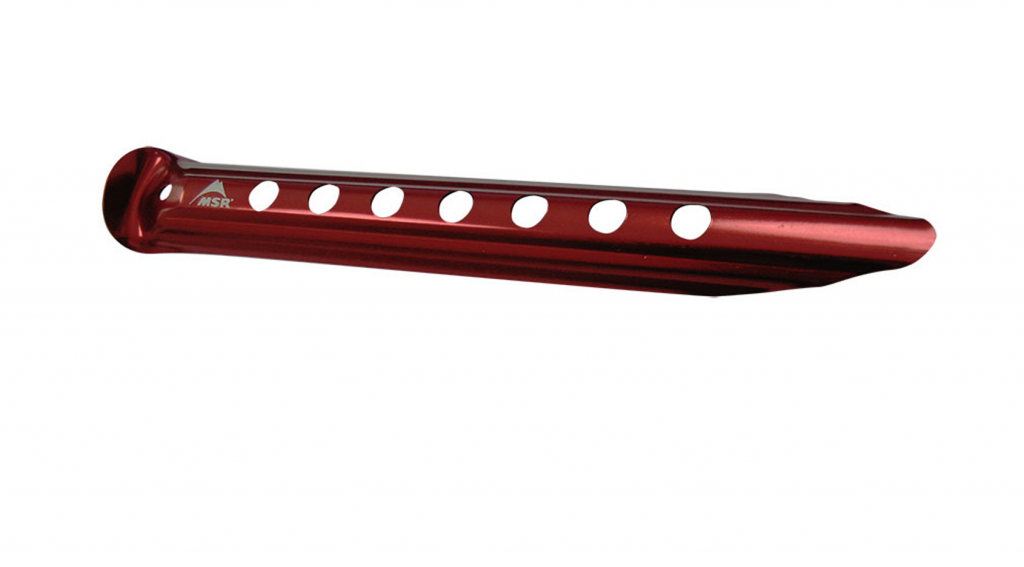
MSR Sand peg can be used as a digging tool in softer soil but in harder soil it is tough on the hands
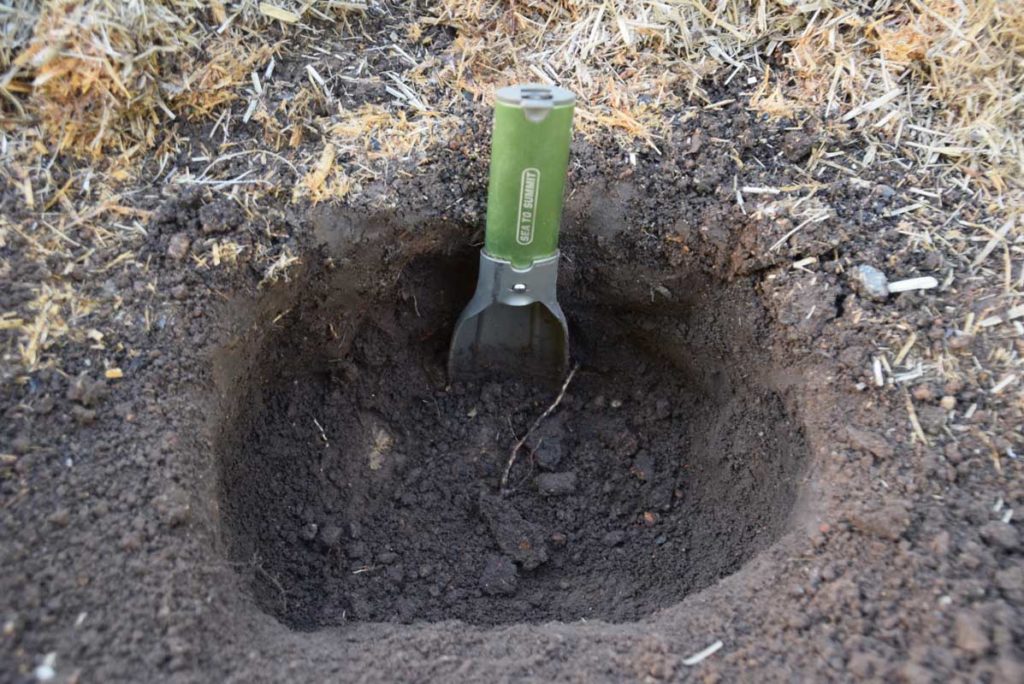
Cat hole. Cats are fairly clean animals and bury their poop, hence the name. The hole in this image is bigger than recommended but this will last us as a couple until we leave camp the next day and minimise the number of holes around a camp site
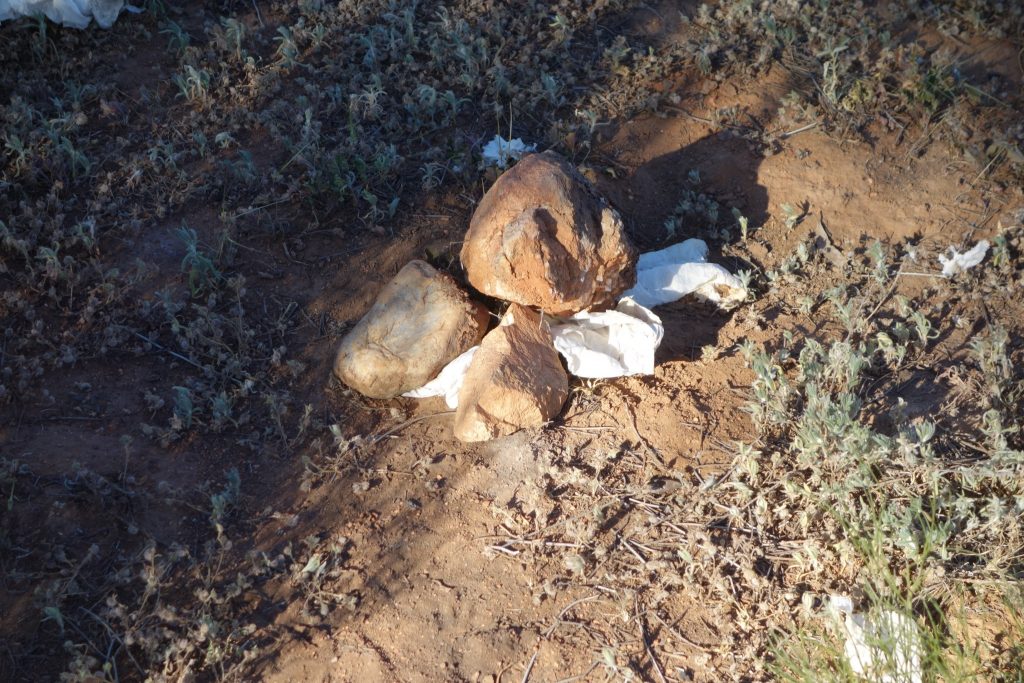
Not what you want to see when you go hiking, solid toilet waste with a few rocks on top
Sharing food
Allowing other hikers to put their hands into you trail mix or other food is a risk and one of the main causes of gastrointestinal distress. How well do your hiking partners clean their hands after they have been to the toilet? How well do you? If you are going to share snacks and food, pour it into their hands, bowl or cup.
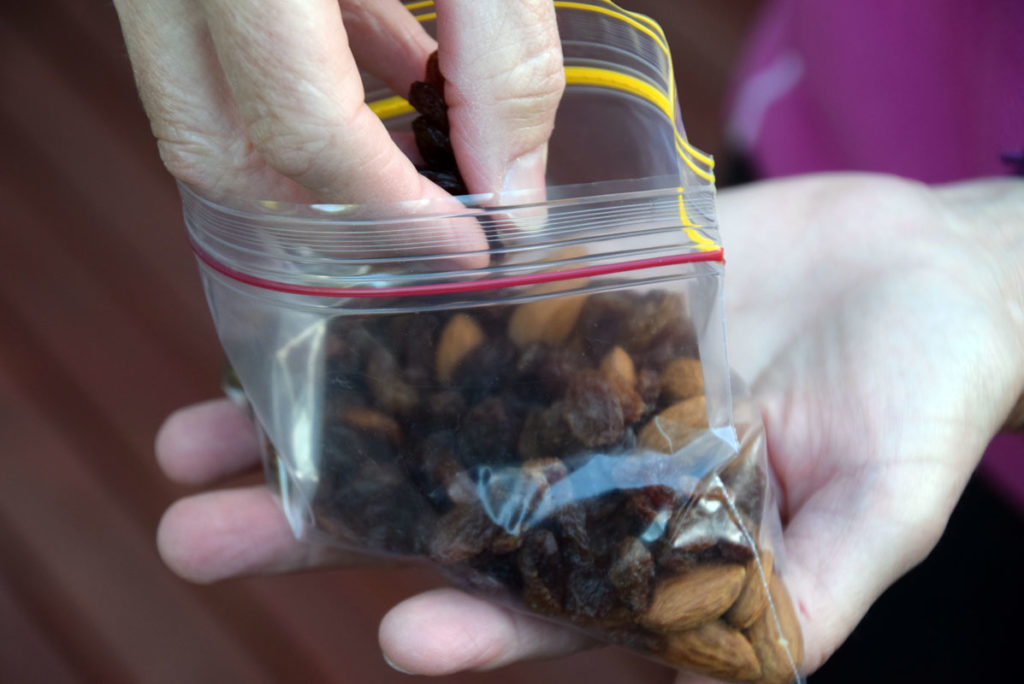
Sharing trail mix. If you’re going to share pour it into your hiking partners hand – don’t let them fish about in your snacks with hands that may not be clean
Dental hygiene
Cleaning your teeth is another of those hygiene steps people often tend to skip when hiking, particularly on shorter trips. Why bother about cleaning your teeth if you are just out for an overnight trip, right?
I must fess up here and say that this does occasionally happen with me but this is when I forget to bring a toothbrush and floss on a hike. Forgetting your teeth for a day, or for that matter even a weekend may not be the worst thing in the world. I had bad teeth hygiene as a kid and with that lots of visits to the dentist, so I try to make up for that now and even on short overnight hikes I will always clean my teeth.
You don’t need a lot to clean your teeth when you hike, just a toothbrush, a small travel toothpaste, we use Lush Toothy Tabs, and some floss. Please note that I will occasionally cut the handle off my toothbrush, not because I’m a gram weeny, but so it will fit it into my dental bag. If you ever travel overseas ask for a toothbrush on the plane as they are usually short handled and are ideal for hiking.
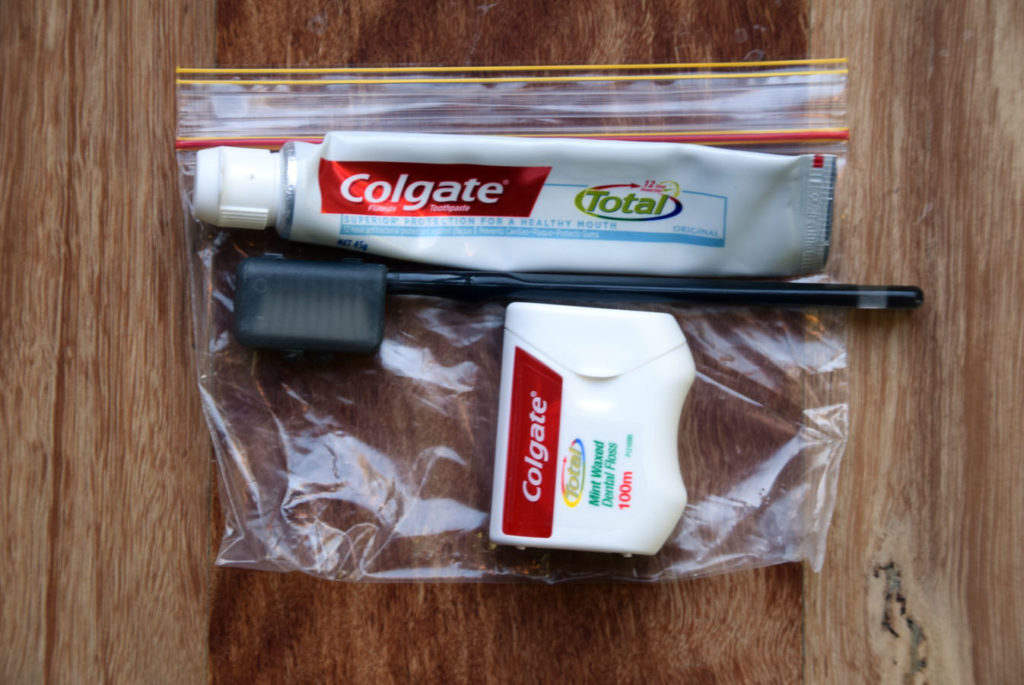
Teeth kit – short handled toothbrush, travel toothpaste and floss in a small ziplock bag
Deodorant
As much as we don’t want to smell and offend other hikers, or ourselves for that matter, missing out on using deodorant or perfume when you are out hiking is not the worst thing in the world. On long multi week hikes in remote areas you are going to smell whatever you do so leave the deodorant at home. Having said that some people will carry it and if you really want to go for it.
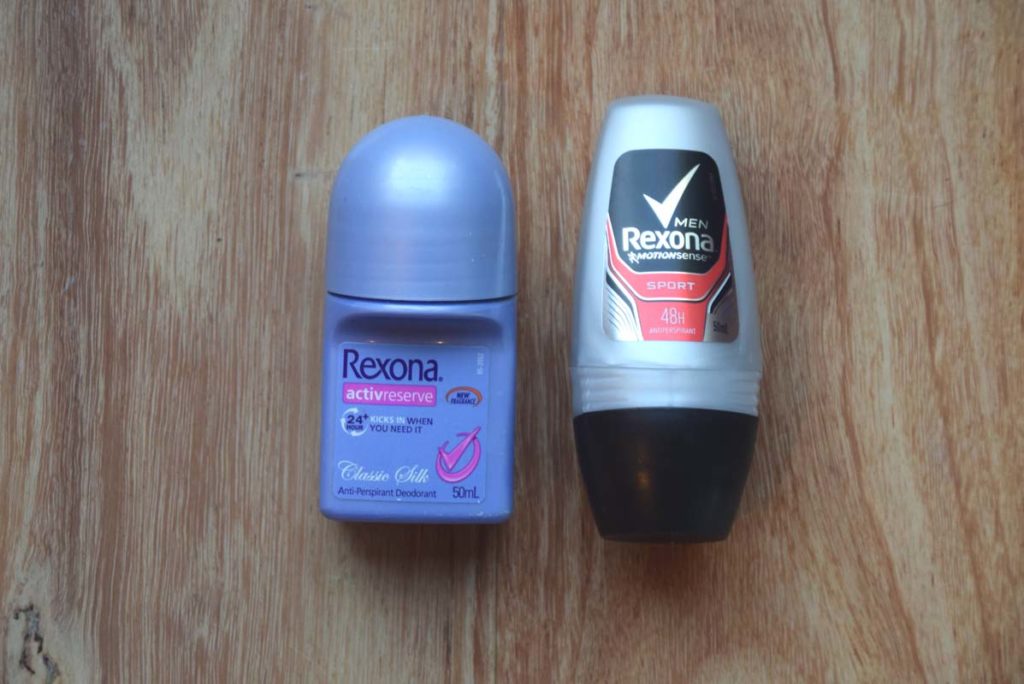
Deodorants are something I’d suggest you leave at home but ultimately its your choice if you want to bring them
Laundry
There’s almost nothing better better than putting on a clean set of clothes. While you may not have access to modern washing facilities on a hike, a simple hand wash to remove the bulk of the dirt and grime can make a big difference. Ensure that whatever clothing you bring along on a hike it is easy to wash and dry quickly.
I’m a big fan of merino wool tops because they smell far less than synthetic tops. I’m very selective when it comes to my clothing and as such will limit what I bring and will wash things like underwear and socks regularly, with the bulkier clothing like pants and tops less so. Small items of clothing will dry hanging on the back of your pack providing the weather is reasonably good. One thing I haven’t carried over the past few years but will on shorter multiway hikes this year is a short length of lightweight cord to act as a clothesline.
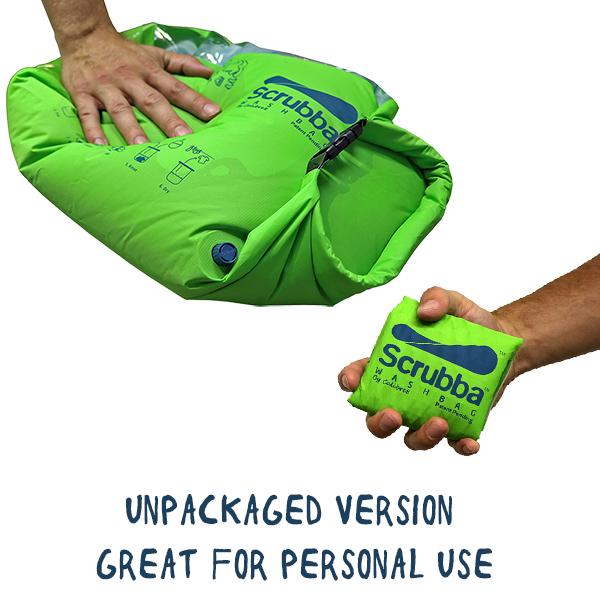
Scrubba wash bag. One option for doing laundry on the trail. Please note that we haven’t trialed this product but will be doing so soon
Final words
The last thing I’ll say on hygiene on the trail is that compared to your day to day life, it’s a compromise. You don’t have a washing machine, porcelain toilet or running water. If you are out bush for any longer than a few hours you may not have the option to ‘hold it’ till you get home. If you are hiking for an extended period get used to smelling less than perfect and reusing clothes. Speaking of clothes work out what clothing pieces suit you best and how easy it is to clean it on the trail.
Last but not least always bring a trowel, toilet paper and hand sanitiser. Just in case!